Recently, we had the opportunity to take a look at the Huawei TaiShan 200 or 2280 server. The server we were able to get had two Huawei/ HiSilicon Kunpeng 920 Arm server CPUs. Each had 48 Armv8 cores, although the family scales to 64 cores per processor. In the server, we saw a number of very interesting features that we wanted to point out when it comes to the CPU itself. After publishing that piece, several folks asked to see the actual chip, and that is what we have today.
A Quick Look at the Banned Kunpeng 920 Arm Server CPU
In January 2019, we covered the Huawei Kunpeng 920 64-Core Arm Server CPU with CCIX and PCIe Gen4 Launch. Just for some perspective, Intel was still selling its Skylake server CPUs (1st Generation Intel Xeon Scalable) as its newest. Cascade Lake was still almost two quarters from launch but it was shipping. The AMD EPYC 7002 Series “Rome” was still almost three-quarters away. To be clear, when the new chip was launched, it felt like an ark of new technology.
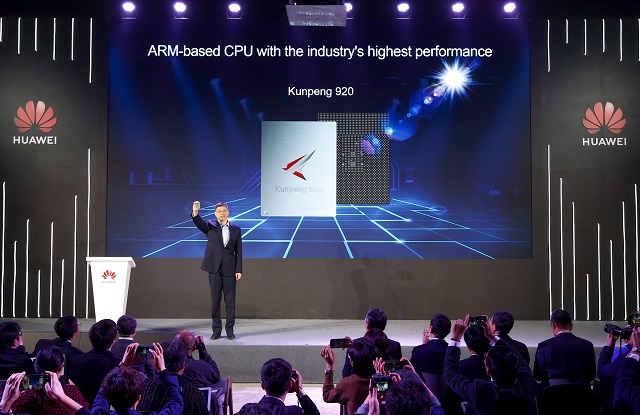
Huawei was using an Arm with up to 64 cores per socket. Intel was at 28 cores/ 56 threads and AMD was at 32 cores/ 64 threads in its still new x86 re-entry. It had 8 channels of DDR4 when the rest of the industry was at 6 channels (Intel) or 8 channels (AMD, but AMD “Naples” was very low volume.) Using PCIe Gen4 was not until Rome for AMD (2019) or Ice Lake for Intel (2021.) Beyond that, Huawei had 100GbE RoCE onboard. That was like the original idea with Zen/ Naples of having 10GbE, but just faster 25GbE links.
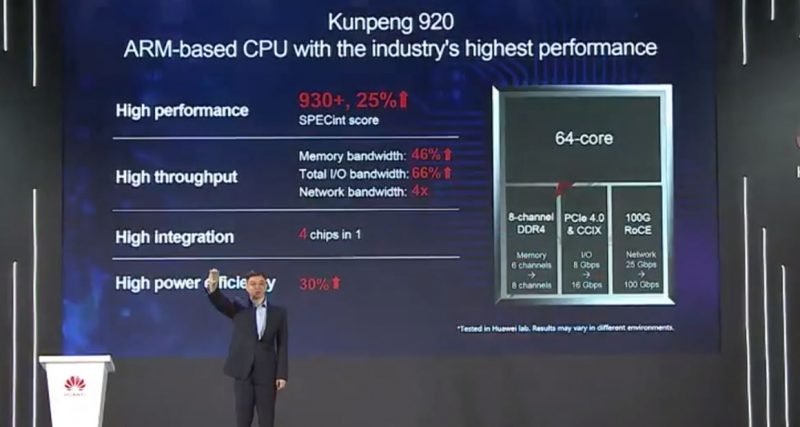
Just for some sense, at SC18 in November 2018, Huawei’s booth had the HiSilicon Hi1616 on display in a number of servers. This was up to 32 cores and had only 1MB of L2 cache for 4 cores. It was also produced on 16nm. Frankly, this was a bit behind the Skylake Xeons of its day in terms of performance.
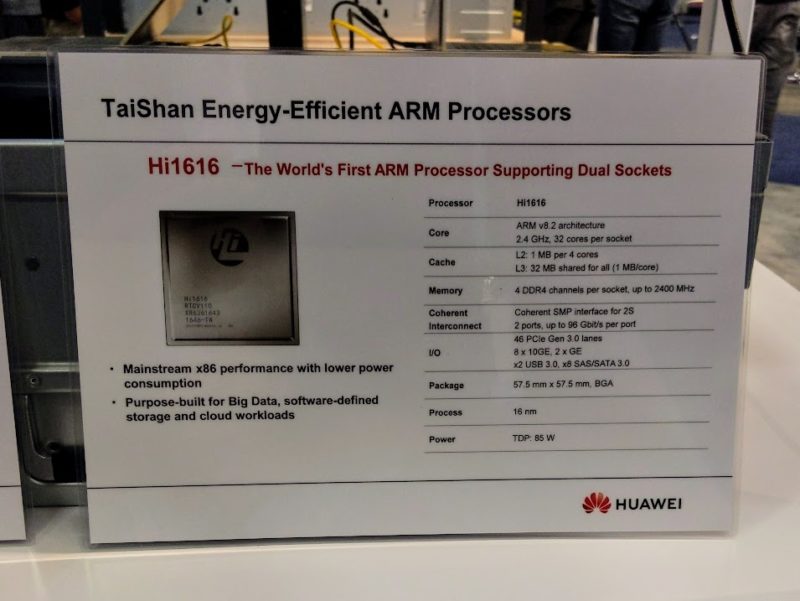
The Hi1616 was not just a placard. Instead, it was shown on the show floor in a number of different servers. We did not cover it at the time, but I looked through old photos, and I found a few shots.
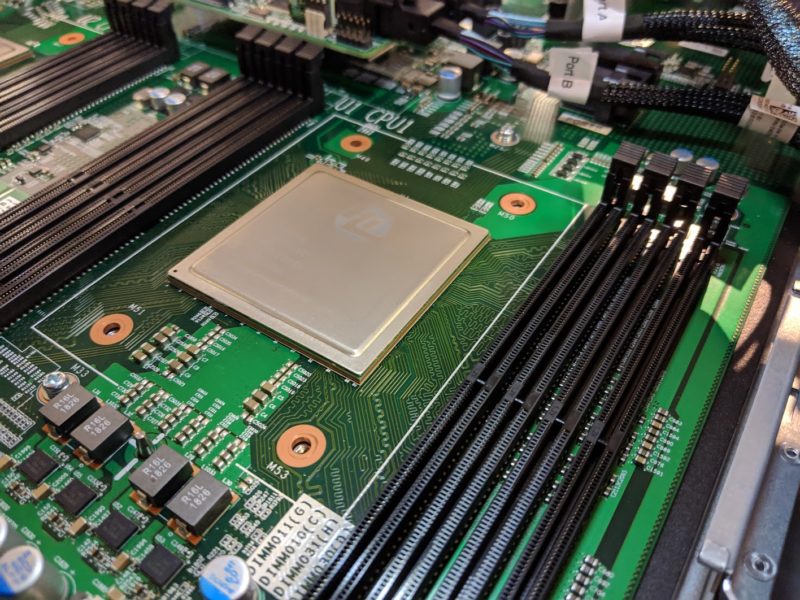
What we did not necessarily know, was that the Hi1620 would come as a 7nm data center Arm processor before others. Just for some sense here, AWS Graviton2 at 64 vCPUs was launched over a year after we saw this at SC18 and almost a year after the Kunpeng 920 / Hi1620 launch.
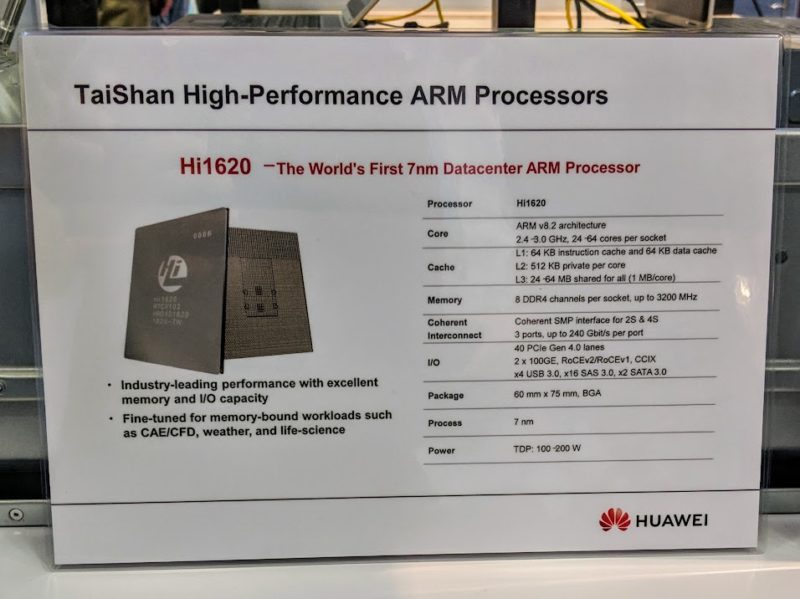
Huawei planned to use the new server CPUs in its TaiShan servers and has entire lines, like the TaiShan 200 (2280) that we just showed. The other main use case for this was in Huawei’s cloud.
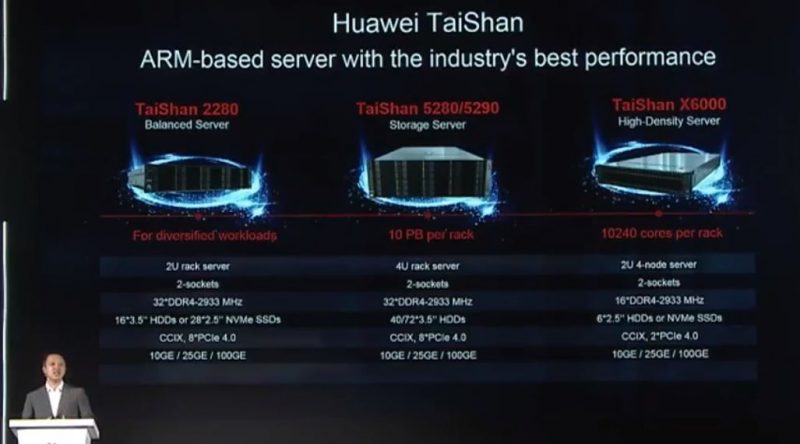
We did not hear much else about the Kunpeng 920 until later in 2019 at Hot Chips when we saw that the Huawei Ascend 910 Provides a NVIDIA AI Training Alternative.
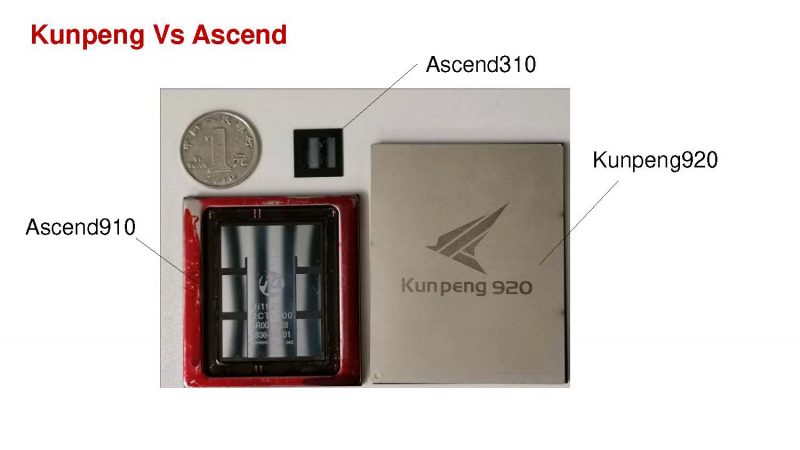
Fast forward to our recent piece, and we now have a dual socket TaiShan 200 (2280) working. We can see the two sockets and 48 cores here. We did not have the 64 core models in our server.
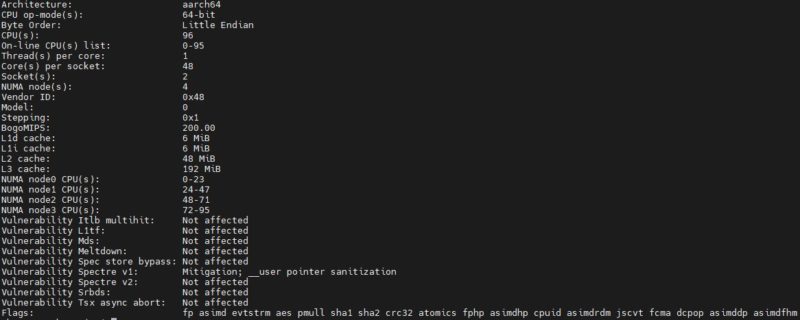
Here is the topology output.
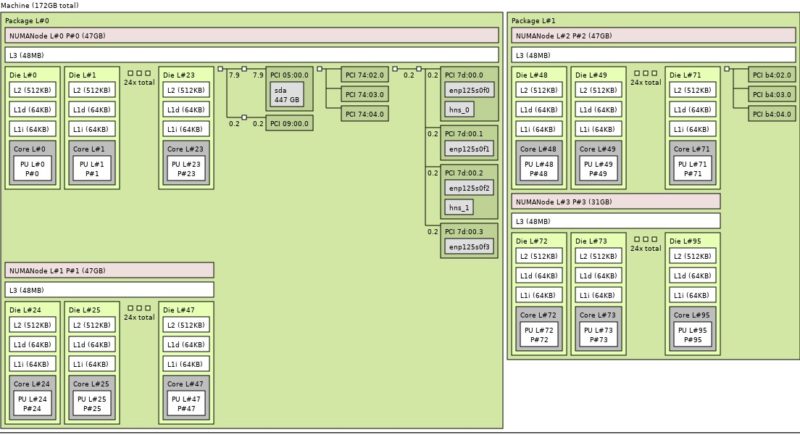
Just as a quick note here, this is a bigger deal for Huawei than for companies like Dell EMC, or HPE. Huawei both sells servers, and operates its own cloud. As a result, years ago it was granted access to both the Intel OEM as well as the Intel cloud provider’s price lists. For those that do not know, over a decade ago, Intel created two price lists, one for public clouds and one for server OEMs. The public cloud providers received enormous discounts on SKUs, and often special parts. Certain companies were effectively on the honor system to properly report if CPUs were being purchased and used in the cloud (at a steep discount.) One can imagine how that could be troublesome without a solid process behind it. Even with access to both price lists, Huawei building its own server CPUs was a big deal. We often discuss AWS as the pioneer of Arm instances and betraying Intel’s high discount/ lower margin structure. One could argue that Huawei was there was well, it is just something we hear less of in the US.
Still, let us get to the hardware.

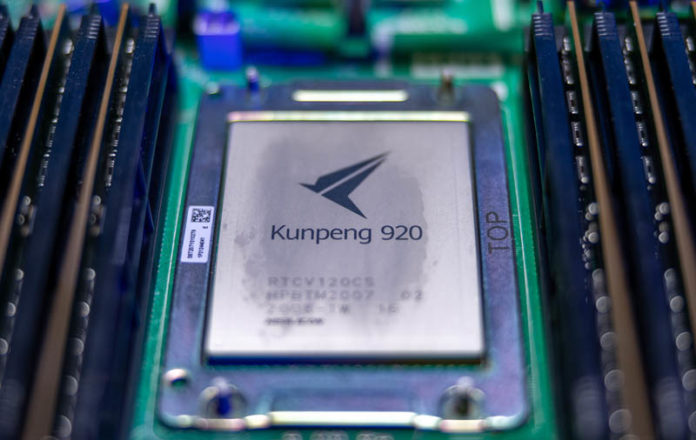



Phytium next?
Followed by a working Qualcomm Centriq would be fun too, for posterity.
Very interesting information. I look forward to reading more about these ‘different’ servers.
Thanks Patrick
Patrick please be aware that these Kunpengs are the mainstay for the latest Huawei storage offerings (v6 gen). Between 2019 and 2021 Huawei was able to transform it’s storage offerings from being x86 Intel based (v5 and earlier) to ARM based. For me it was a huge deal considering the need to not only develop stable hardware platform, but also the effort required to port the whole storage unit software stack. To the persons accustomed with how much legacy code is contained in the storage offerings from Dell or HPE this was a major shock.